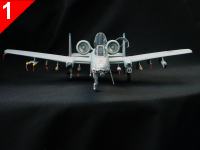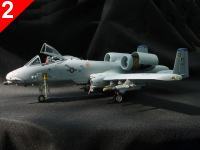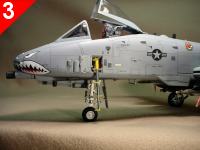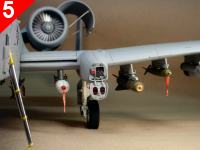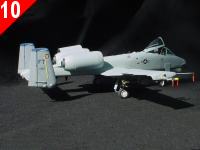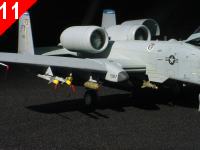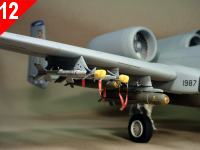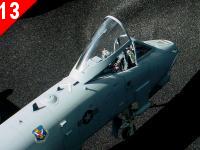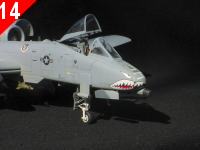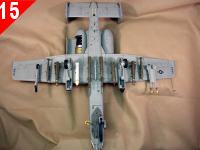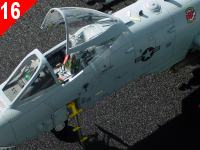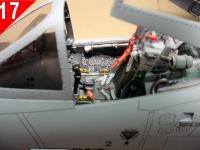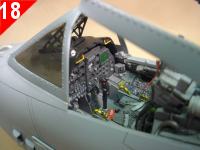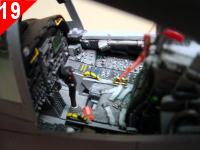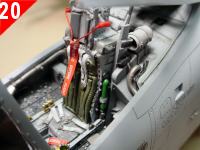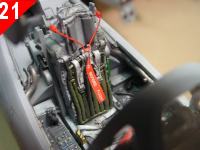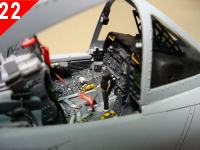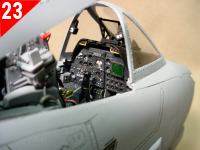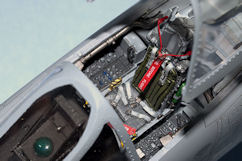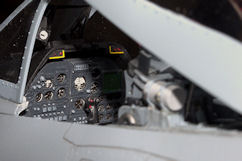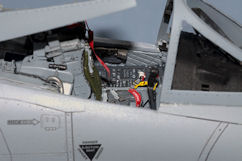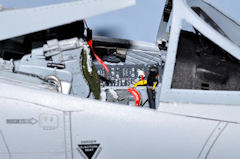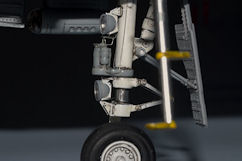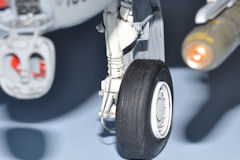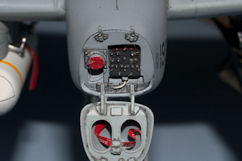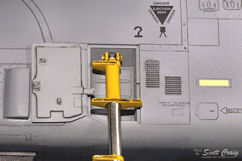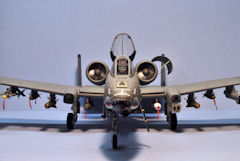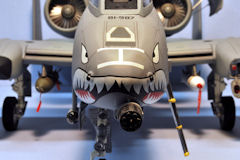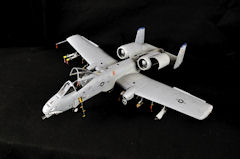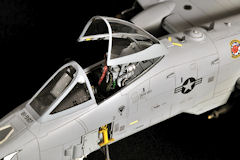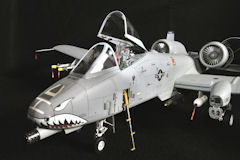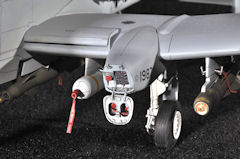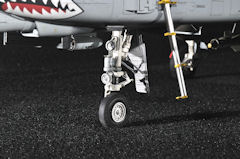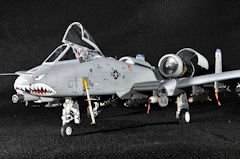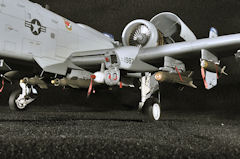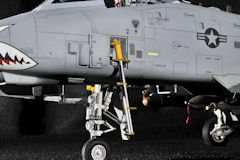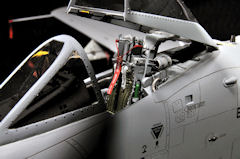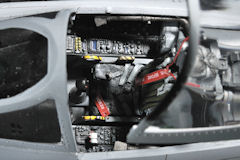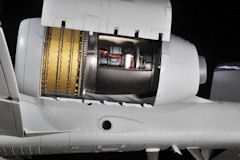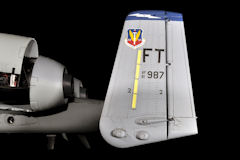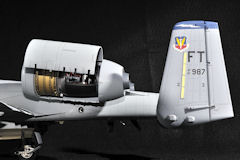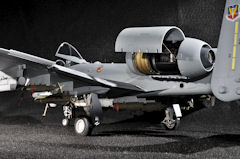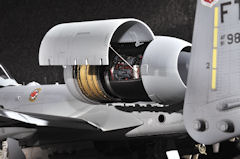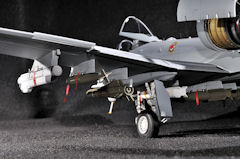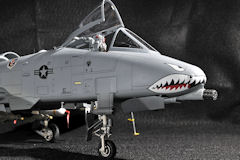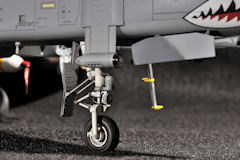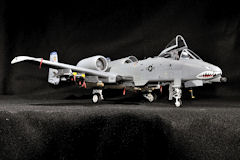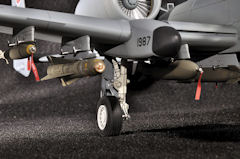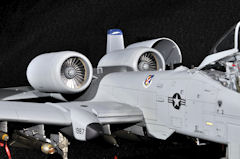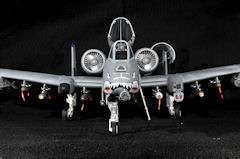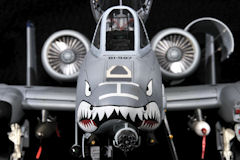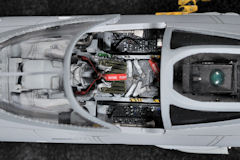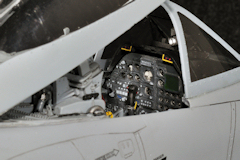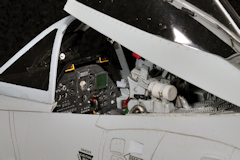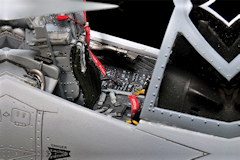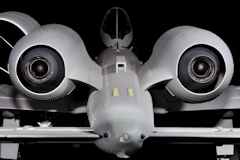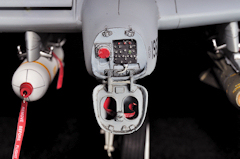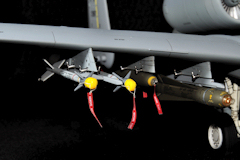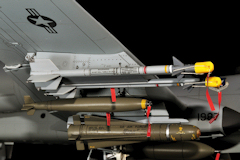Affectionately known as the "Warthog", the Fairchild-Republic A-10A was never designed to fly with the Eagles
and the MiG's and the Tomcats. It was designed as a close air support aircraft to get down in the dirt
and the mud and the smoke in support of ground troops.
Carrying a 7-barreled
30mm GAU-8 Avenger cannon the Hog is devestatingly effective against ground targets. The GAU-8
typically fires
PGU-13 High Explosive Incendiary or
PGU-14 Armor Piercing Incendiary with a depleted uranium penetrator. The GAU-8 itself is approximately
21 feet long and weighs 619 pounds (here
is a picture of one next to a Volkswagen Beetle for comparison). It can carry up to 1,350 rounds
of ammunition and fires them at a rate of 2,100 or 4,200 rounds per minute selectable by the pilot (I have seen
differing numbers on the rate of fire. These numbers are from an Air Force site). The cartridges are
11.4" long and weigh about 1-1/2 pounds each. The penetrator of the PGU-14 (the "Bullet" part) weighs about
0.6 pound and flies at a muzzle velocity of over 1,000 fps. If you want to get an idea of just how large a
30mm 7-barreled cannon is, Take A Look At This Picture
If the GAU-8 isn't enough, the A-10 has 11 hardpoints and is capable of carrying up to 16,000 pounds of ordnance.
It can handle various stores including the AGM-65 Maverick, Mk82 500lb general-purpose bombs, BLU-1 and BLU-27/B
Rockeye II cluster bombs and the cluster bomb unit CBU-52/71.
The A-10A has the distinction of being the first airplane designed around its weapon. The GAU-8 cannon was
not adapted to fit the A-10, the A-10 was specifically built around the GAU-8. The pilot flies in a titanium
tub built around the cockpit. The two General Electric TF-34-100/A turbo-fan engines are mounted high on the
rear of the fuselage to protect them from FOD (Foreign Object Damage) and to reduce the heat signature presented to
heat-seeking antiaircraft weapons on the ground below. The two vertical stabilizers, while primarily designed
to give the A-10 its responsive control, also help mask the two engines from heat seekers on the ground.
The Hog is not what would be termed as an "Attractive" airplane, but it is certainly distinctive. Its
straight wings, high-mounted engines, large bubble canopy, stores lined up under the wings, and the snout of
that 30mm cannon sticking out the front cannot be mistaken for anything else in the combat arena.
For more information on the A-10, the US Air Force has an excellent fact sheet
At This Link. For all the A-10 photographs you could ever want, try the links in the Reference Section below.
This model depicts aitcraft number 81-0987. The aircraft initially deployed to the
Air Force on April 14, 1983. On March 1, 2003 Captain Kim "KC" Campbell arrived
in Iraq with the aircraft as a member of the 75 Fighter Squadron, 23 Fighter Wing deployed from
Fort Pope, N.C. as part of Operation Iraqi Freedom. On April 7, 2003, one week before the
aircraft would have been in service for 20 years, it was damaged by ground fire.
Captain Campbell got the aircraft back to base, however the battle damage repair crew determined that
there was too much damage to repair there. The aircraft was dismantled and shipped back to Davis-
Monthan Air Force Base to determine whether it could be repaired or not. More details
are avaiable at This Link or,
if you want the rest of the story about what happened to 81-0987 afterwards,
This Link is where you want to go!
Historical Note .... The 23 Fighter Group has a long and distinguished record. It was
originally established as 23 Fighter Wing on 10 Aug 1948, and any fan of military aviation
would recognize their logo: the legendary Flying Tigers. The 23d Fighter Group can trace
their roots back to December 17, 1941 when the 23d Pursuit Group (Interceptor) was constituted
at Langley Field,VA. just 10 days after the Japanese attack on Pearl Harbor. Originally
the 23d Fighter Group was assigned three squadrons, the 74th, 75th and 76th, with 5 staff
officers, 5 pilots, and 19 ground crew from the original Flying Tigers as part of the organization.
Here Is A Link to their lineage, and
Here Is A More Complete page describing their history.
As with all great jets their era must eventually come to an end.
Here is a some information on the last A-10 built, serial number 82-0665, compliments of
The Warthog Pen


